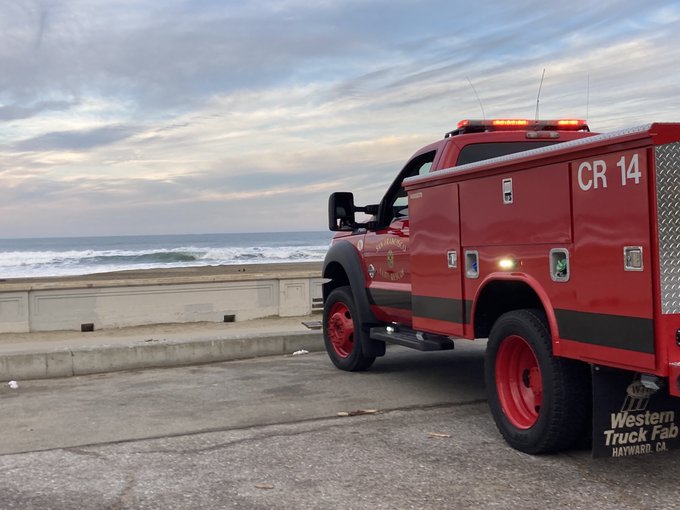On California’s central coast, the National Weather Service reported tsunami waves of up to 2.5 feet and flooding in beach parking lots at Port San Luis. About 200 miles down the coast, the waves were much smaller at Southern California’s Seal Beach, according to Michael Pless, the owner of M&M Surfing School.
“The waves are looking pretty flat,” Pless said. “We’re hoping they reopen the beach in a couple hours.”
Crowds gathered at the Santa Cruz Harbor to watch the rising and falling water strain boat ties on docks. Law enforcement tried to clear people away when big surges started at around 7:30 a.m.
About an hour later, a surge went over the back lip of the harbor, filling a parking lot and low-lying streets and setting some cars afloat.
Jason Hoppin, communications manager of Santa Cruz County, said officials have been inspecting for damage. Hoppin said that in previous years with tsunami advisories, millions of dollars in damage hit Santa Cruz’s harbor. In 2011, waves from Japan’s Sendai earthquake caused more than $20 million in damage.
“We’re asking people to stay out of the water, even surfing, which is a little bit difficult for some of our residents. But it’s the best and safest thing to do right now,” Hoppin said.
In Berkeley, residents aboard houseboats at the Berkeley Marina were ordered to evacuate on Saturday morning. Residents told KQED they were given more warning this weekend than during the last tsunami advisory in 2011.
“It looks like everybody has stepped up their tsunami preparedness,” Berkeley Marina resident Brian Cline said. “The police were down here making it very clear that everybody needs to get off their boats and head to shore.”
Cline grabbed hard drives, a camera, extra clothes and cash, and he booked it. Another Berkeley Marina resident, Kat Schaaf, said she got the evacuation order at about 7 a.m., which was starkly different from when the 2011 tsunami waves caused by the Sendai earthquake in Japan rocked the Bay Area.
“When Sendai happened, nobody warned us,” she said.
On Tonga, home to about 105,000 people, video posted to social media showed large waves washing ashore in coastal areas, swirling around homes, a church and other buildings. Satellite images showed a huge eruption, with a plume of ash, steam and gas rising like a mushroom above the blue Pacific waters.
New Zealand’s military said it was monitoring the situation and remained on standby, ready to assist if asked.
There were no immediate reports of injuries or on the extent of the damage because all internet connectivity with Tonga was lost at about 6:40 p.m. local time, said Doug Madory, director of internet analysis for the network intelligence firm Kentik.
Tonga gets its internet via an undersea cable from Suva, Fiji, which presumably was damaged. Southern Cross Cable Network, the company that manages the connection, does not know yet “if the cable is cut or just suffering power loss,” Chief Technical Officer Dean Veverka said. He said he assumed the eruption was responsible.

